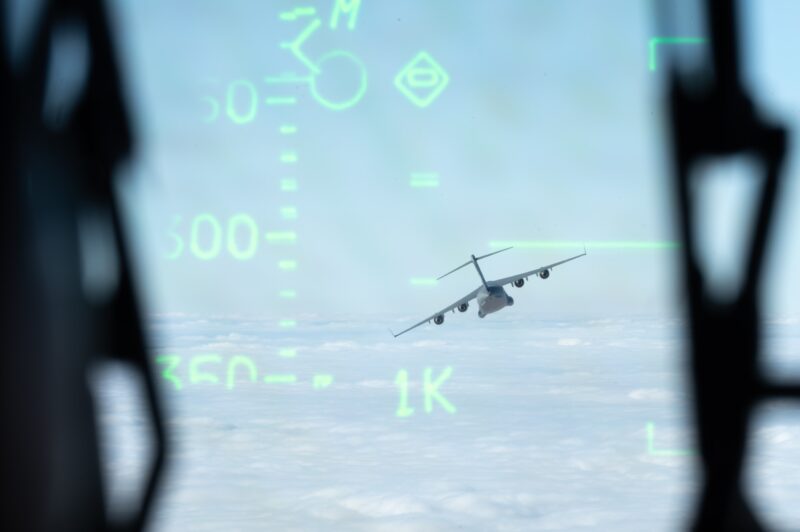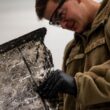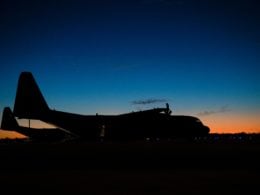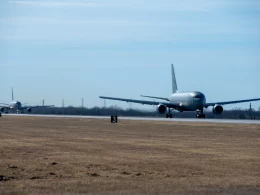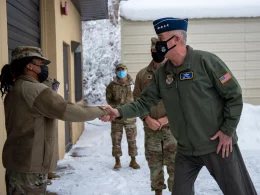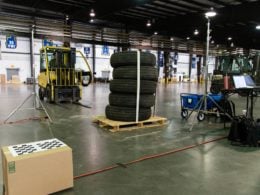JOINT BASE McGUIRE-DIX-LAKEHURST, N.J. —
A C-17 Globemaster III takes low, evasive maneuvers through mountains, flying lower than the peaks only to crest the top and dive again. The aircrew simulates calls for support from an allied jet, and the crew makes their final descent on a small, improvised flightline where an F-22 Raptor awaits fuel and munitions transfer, ready to continue the fight. The C-17 crew then takes off and leaves the flightline without a trace. This training in a simulated combat scenario helps prepare aircrews for the future fight.
Airmen assigned to the 305th Air Mobility Wing’s 6th Airlift Squadron collaborated with units from Joint Base Langley-Eustis, Virginia, during the Tactics Advancement Course (TAC), Feb. 7-8. TAC allows aircraft maintainers to gain experience with aircraft they do not commonly work with, expanding their toolkit for more versatility in future operations.
“TAC is supposed to be a bridge between the upgrade training we do at Altus (Air Force Base), Oklahoma, at the formal training unit,” said Master Sgt. Joseph Berglund, 6th AS C-17 evaluator loadmaster. “This makes us more adaptable and agile when it comes to combat employment for the C-17.”
The first stage of the course was a formation flight of two C-17s trading leading and following positions within their flight path. After landing at Joint Base McGuire-Dix-Lakehurst, New Jersey, the crew consolidated equipment and began their flight to JBLE. After landing at JBLE, Airmen helped the crew load F-22 cargo while utilizing the flightline.
“The biggest thing to take away is being able to think on the fly,” Berglund said. “Always maintain your situational awareness, make sure that you can adapt and flex to new and evolving information that is passed to you at any phase of flight, and make sure that you’re ready to accomplish the mission.”
Keeping the same stringent training environment, the 6th AS aircrew set up tents on the flightline to remain in the simulated exercise environment throughout the night. This exercise helps lay the groundwork for collaboration between installations Air Force-wide, improving cohesion when working toward a central mission.
“We always talk about joint environments and interoperability and that’s exactly what this is,” Tech. Sgt. Eric McKinley, 6th AS C-17 loadmaster, said. “Being able to work with JBLE, you get to know their people and what to expect from each other, which is absolutely pertinent. We need to understand what our capability is. Doing that now versus in a contingent environment is 100% better. We’ll certainly be ahead of the game.”
This exercise further improves Mobility Airmen’s adaptability by training them to overcome unexpected obstacles. Pilots were tasked with taking low air, evasive maneuvers to ensure they have the skillset to employ rapid, agile, and resilient support. Throughout the exercise, Airmen tested new tactics and problem-solving techniques to enhance their capabilities against near-peer adversaries, and this course postures Air Mobility Command Airmen to execute agile operations on a global scale.




